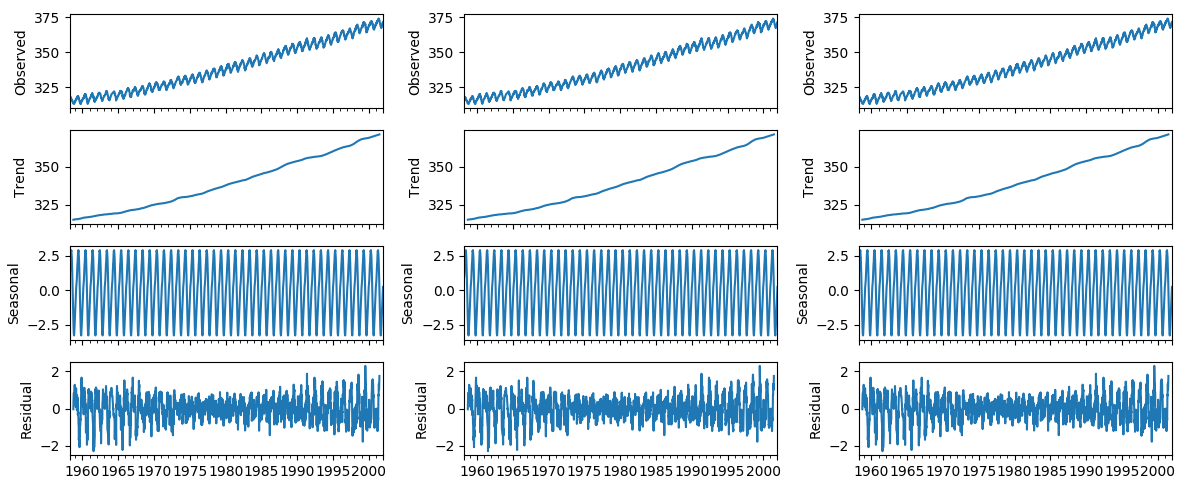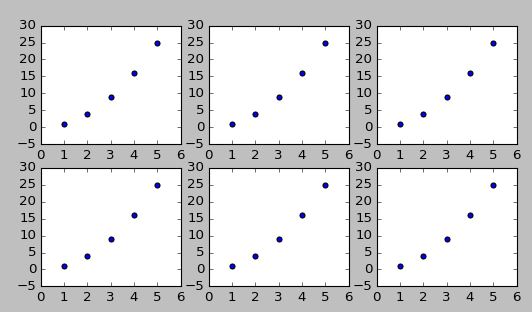sm.tsa.seasonal_decompose returns a DecomposeResult. This has attributes observed, trend, seasonal and resid, which are pandas series. You may plot each of them using the pandas plot functionality. E.g.
res = sm.tsa.seasonal_decompose(someseries)
res.trend.plot()
This is essentially the same as the res.plot() function would do for each of the four series, so you may write your own function that takes a DecomposeResult and a list of four matplotlib axes as input and plots the four attributes to the four axes.
import matplotlib.pyplot as plt
import statsmodels.api as sm
dta = sm.datasets.co2.load_pandas().data
dta.co2.interpolate(inplace=True)
res = sm.tsa.seasonal_decompose(dta.co2)
def plotseasonal(res, axes ):
res.observed.plot(ax=axes[0], legend=False)
axes[0].set_ylabel('Observed')
res.trend.plot(ax=axes[1], legend=False)
axes[1].set_ylabel('Trend')
res.seasonal.plot(ax=axes[2], legend=False)
axes[2].set_ylabel('Seasonal')
res.resid.plot(ax=axes[3], legend=False)
axes[3].set_ylabel('Residual')
dta = sm.datasets.co2.load_pandas().data
dta.co2.interpolate(inplace=True)
res = sm.tsa.seasonal_decompose(dta.co2)
fig, axes = plt.subplots(ncols=3, nrows=4, sharex=True, figsize=(12,5))
plotseasonal(res, axes[:,0])
plotseasonal(res, axes[:,1])
plotseasonal(res, axes[:,2])
plt.tight_layout()
plt.show()
![enter image description here]()



